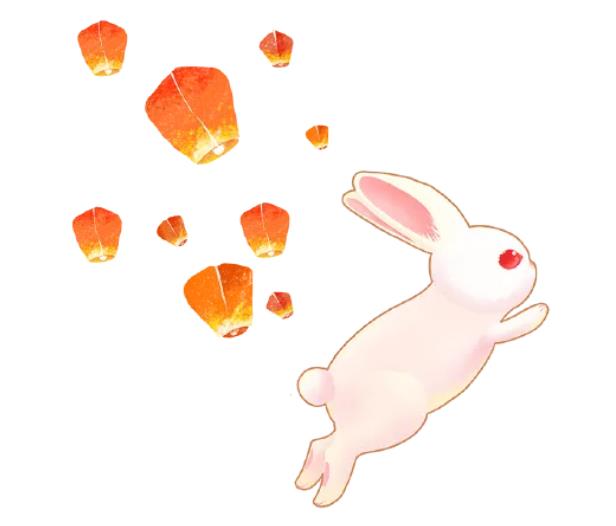Those people do not have knowledge about Mid-Autumn Festival, so they do not feel the real taste of Chinese culture, which has a long history. Culture is created by language. Ancient Chinese culture was similar to the present one, but they just changed the traditional Chinese characters(繁体字) into simplified Chinese characters(简体字). This term has given us another view of culture and activity. When we have activity-based learning, it becomes outcome-based one. Here, I provide an example: writing and speaking are activities when learning Chinese language; reading is also an activity, but it is only a part of learning.
Similarly, when we want to learn about a new culture, we need an environment, and then we participate in cultural activities to learn and adjust ourselves. It’s good that China has its inclusive culture, and everyone will feel very comfortable with it once following it. A society can’t thrive if it attaches itself strongly to only its own culture and shuts doors to other cultures. But the good thing is that China, especially UCAS, provides a friendly environment to participate in Chinese cultural activities and share various culture with national and international students. Such activities give us many opportunities, regarding social gatherings and so.

In advance, telling this to Newcomers, I strongly suggest to all of you to actively participate in different activities in UCAS, especially pay attention to compulsory courses very helpful for learning Chinese language and culture. Everyone will easily understand the importance of language, culture, and the environment. And it will become essential and helpful for everyone during their stay in China. In the current world, UCAS also taught how Newcomers would fit into their culture. And we all have a common desire to learn about Chinese traditional culture. At UCAS, International Students spend much of their time and energy in activities concerning Mid-Autumn Festival, Chinese New Year, and many others. Those activities give us more spirit and provide a friendly environment to improve our understanding of Chinese language and culture very well.
The mid-autumn festival is here; we should learn more about it.
Mid-Autumn Festival (中秋节 zhōng qiū jié) is also called the Moon Cake Festival or the Moon Festival. We all have an impression of the this traditional festival, but we may know less about it.

The Origin of the Mid-Autumn Festival
Only a few people can tell the source of it. The Mid-Autumn Festival originated over 3000 years ago. It was popularized during the Han dynasty(汉朝). Mid-Autumn Festival has a long historywith various autumn seasonal customs, most of which have ancient origins.
The Mid-Autumn Festival falls on the 15th day of the 8th month in Chinese lunar calendar. But in the Gregorian calendar, the date of the Mid-Autumn Festival changes every year, usually distributed between the early September and earlyOctober.
Mid-Autumn Festival is celebrated in many Asian countries, but in China, it is the second most important Chinese festival after the Chinese New Year. Chinese people have a three-day holiday for this.

Mid-Autumn Festival Activates and Significance
Mid-Autumn Festival probably began as a harvest festival. Worshiping the moon has gradually evolved into activities like watching and singing about the moon as one of folk festivals' significant rituals and customs. The full moon symbolizes the reunion of people, comforting those who miss their hometowns and their loved ones. There are many customs and forms of the Mid-Autumn Festival, but the most influential one is probably, "Chang'e flying to the moon(嫦娥奔月 Cháng É bēnyuè) ", a myth and legend in ancient China.
The story of "Chang'e flying to the Moon" tells us that no matter what we do, we must care about others, and only such a family will be full of justice. It symbolizes the yearning for a lovely reunion and a happy life shared by everyone. It is a living representation of realities inside the individual's mind.

In Chinese, there is also another activity called hanging up lanterns (竖中秋 shù zhōng qiū). According to Chinese culture, the higher the lanterns are hung, the better luck they can bring.
Eating moon cakes are also another significant activities. Everyone must try it to enjoy the real taste of the Mid-Autumn Festival. According to legend, rebels led by Zhu Yuan Zhang secreted messages in moon cakes to plot the overthrow of the Mongolian-founded Yuan dynasty during the Mid-Autumn Festival. Therefore, the Han people also celebrate the overthrow of the Mongolians at the Mid-Autumn Festival. As a tribute to this occasion, moon cakes are still eaten today.

There are three main ways of celeberating Mid-Autumn Festival.
- Happy Mid-Autumn Festival |中秋节快乐 | zhōng qiū jié kuài lè.
- Happy Moon cake Festival | 月饼节快乐 | yuè bǐng jié kuài lè.
- Happy Moon Festival | 月亮节快乐 | yuè liàng jié kuài lè.
Author Info
Muhammad Adnan, PhD student, 2022 ANSO
State Key Laboratory of Environmental Geochemistry
Institute of Geochemistry Chinese Academy of Sciences IGCAS
University of Chinese Academy of Sciences UCAS



